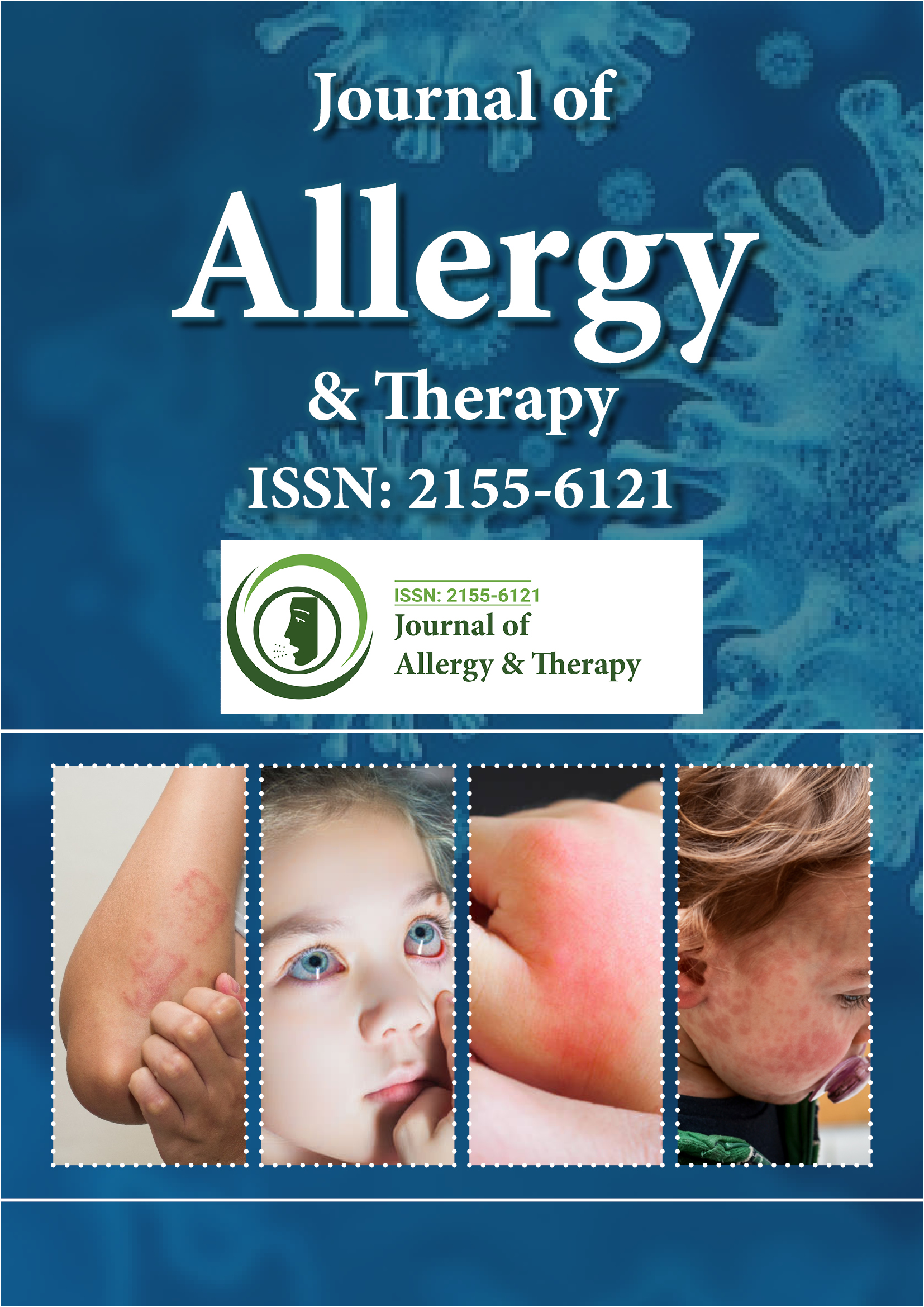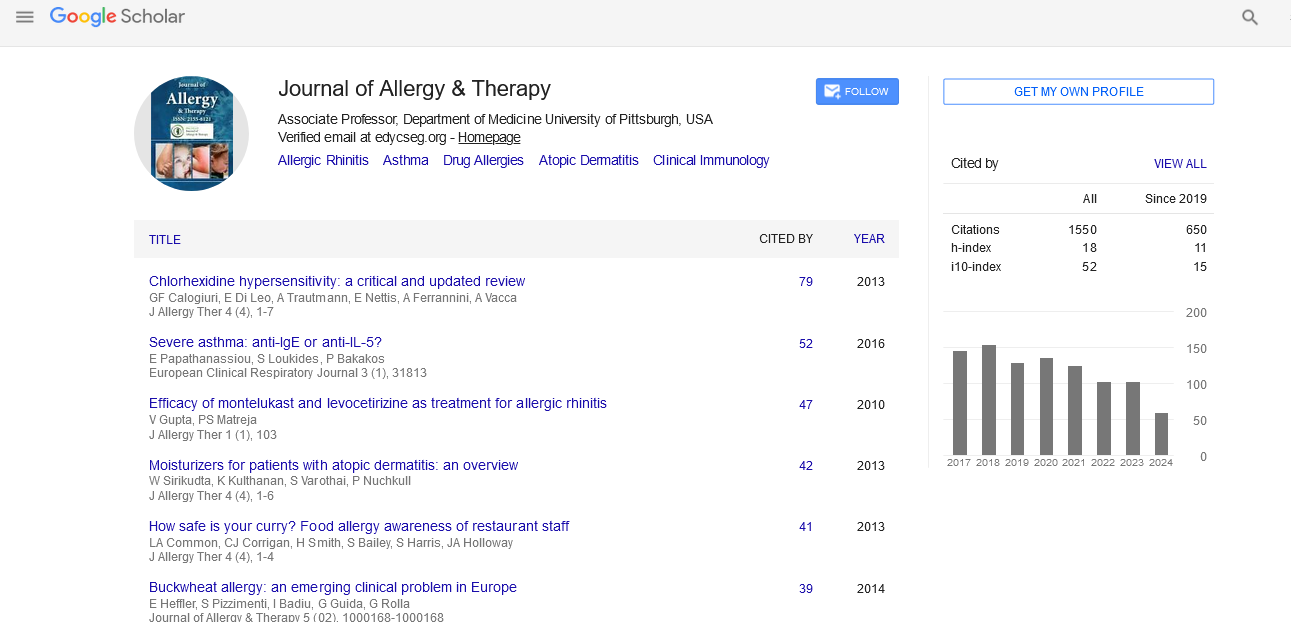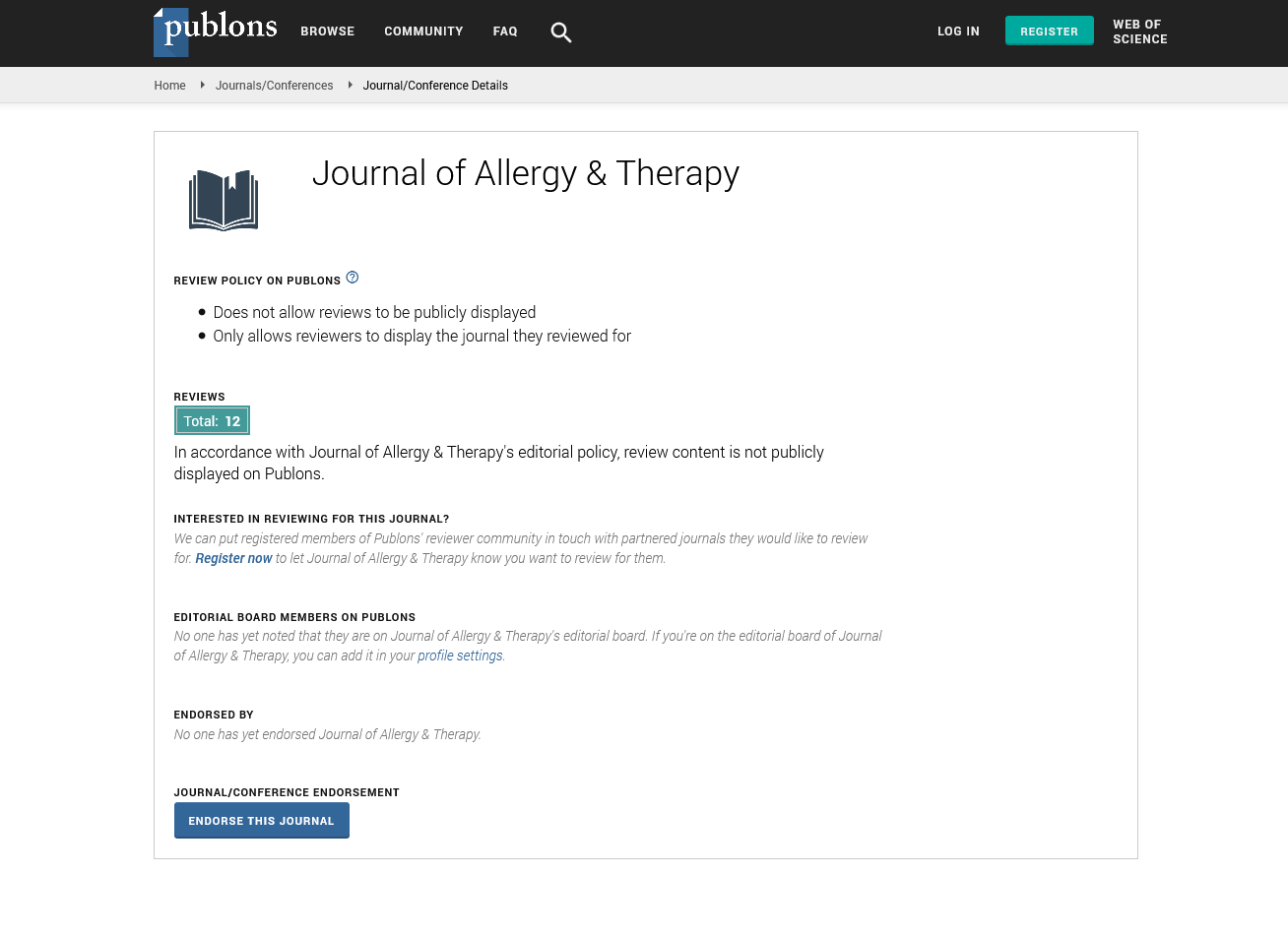Indexed In
- Academic Journals Database
- Open J Gate
- Genamics JournalSeek
- Academic Keys
- JournalTOCs
- China National Knowledge Infrastructure (CNKI)
- Ulrich's Periodicals Directory
- Electronic Journals Library
- RefSeek
- Hamdard University
- EBSCO A-Z
- OCLC- WorldCat
- SWB online catalog
- Virtual Library of Biology (vifabio)
- Publons
- Geneva Foundation for Medical Education and Research
- Euro Pub
- Google Scholar
Useful Links
Share This Page
Journal Flyer

Open Access Journals
- Agri and Aquaculture
- Biochemistry
- Bioinformatics & Systems Biology
- Business & Management
- Chemistry
- Clinical Sciences
- Engineering
- Food & Nutrition
- General Science
- Genetics & Molecular Biology
- Immunology & Microbiology
- Medical Sciences
- Neuroscience & Psychology
- Nursing & Health Care
- Pharmaceutical Sciences
Assessment of the pattern of aeroallergen sensitization among patients suffering from airway allergy
7th International Conference on Allergy, Asthma and Clinical Immunology
September 14-15, 2016 Amsterdam, Netherlands
Alanood Asiri
King Saud University, KSA
Posters & Accepted Abstracts: J Allergy Ther
Abstract:
Background: Prevalence of airway allergic disorder is increasing worldwide and varies in different geographical locations. Objective: This study was performed to detect the pattern of aeroallergen sensitization among patients suffering from allergic asthma and allergic rhinitis who are undergoing allergy skin prick test for detection of aeroallergen sensitization at an allergy clinic at King Khalid University Hospital, Riyadh. Methods: A total of 113 patients suffering from airway allergic disorder undergoing allergy skin prick testing in the Allergy Clinic between December 2012 and March 2014 were included in the study. This group of patients included 63 (55.8%) females and 50 (44.2%) males with the mean age of 37+13 years. Results: The most frequently occurring sensitizing allergens in descending order were Cat in 54 (47.8%), in 40 (35%), Mesquite in 29 (26%), Bermuda grass in 26 (23%), Cockroach in 23 (20.4%), Lolium in 23 (20.4%) and House Dust Mite Dermatophagoides farinae (HDMF) in 22 (19%) patients. Skin prick test reactivity against Cat, z, Mesquite, Bermuda grass and Lolium exhibited a significant overlap and were frequently observed to co-exist in a sizable number of patients with airway allergy. Whereas no gender differences were evident for the pattern of skin reactivity, Cat and Salsola allergen reactivity was found to exhibit a seasonal variation. Conclusion: High level of aeroallergen reactivity detected in the present study emphasizes the need for introduction and implementation of environmental control measures for avoidance of exposure to aeroallergens.
Biography :
Email: alanood.a.asiri@gmail.com


